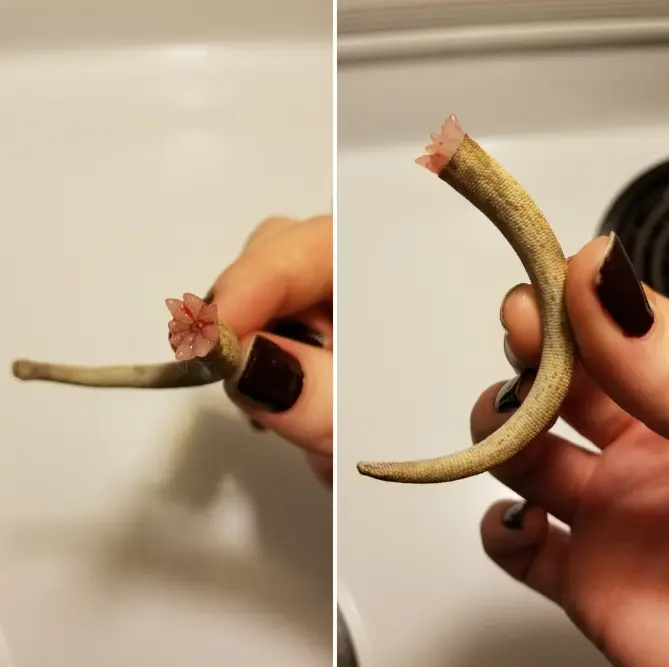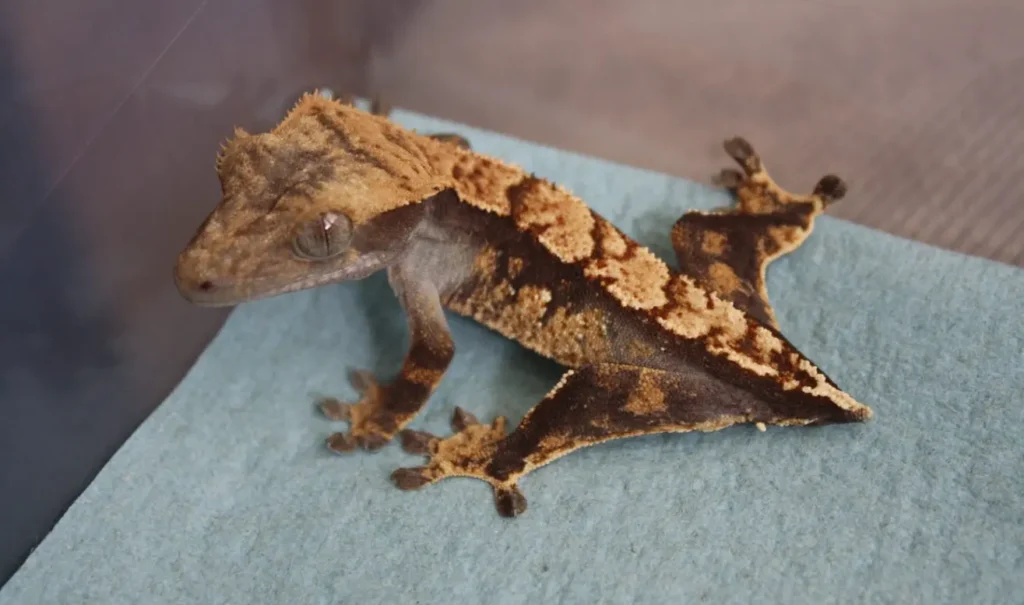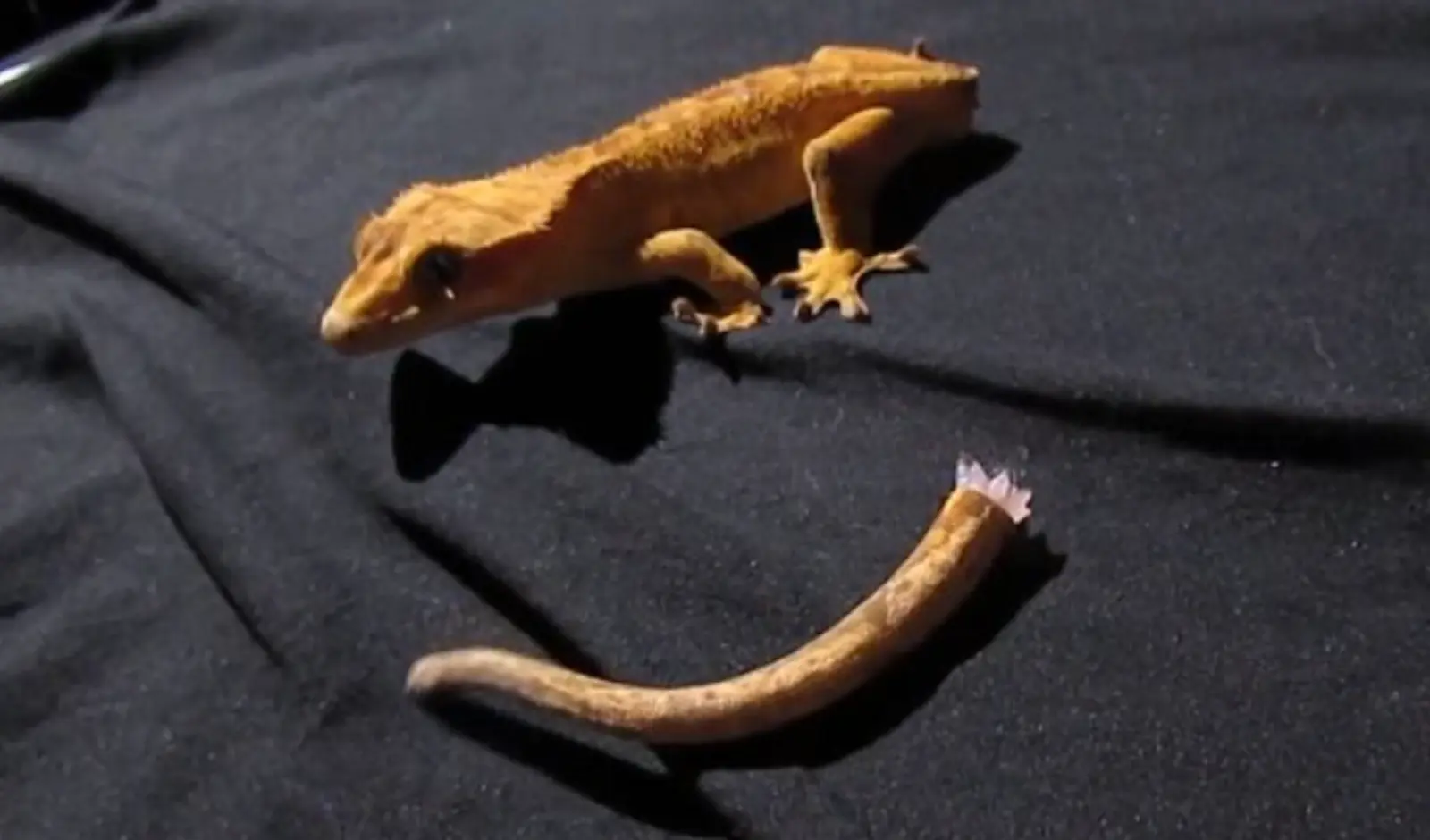If your crested gecko loses its tail, nothing serious will happen!
So don’t worry!
However, there are some things you must keep in mind when this happens, otherwise, you may end up losing your little guy too!
Let’s move on…
Why Crested Gecko Loses It’s Tale?

Crested geckos drop their tails as a defense move when they feel threatened. They do this in response to things like loud noises, being pinched, squeezed, or grabbed.
This process is basically called autotomy, and they use this trick as a means to escape from predators.
Here’s why they lose tail:
⇒ Distracting Predators
When a crested gecko senses danger or is under attack, it willingly sheds its tail.
The separated tail keeps moving for a short time, diverting the predator’s attention.
This gives the gecko a chance to run away safely while the predator is still focused on the moving tail instead of catching the gecko.
⇒ Survival Strategy
The tail is like a “sacrificial” body part.
Although losing a tail can be tough and somewhat painful, it’s better than getting caught and becoming a delicious dinner for the predator.
While the tail will not grow back, it’s far better than losing the tail instead of being killed!
What will happen if my Crested Gecko loses it’s tail?
If your Crested Gecko loses its tail, it won’t grow back. But the gecko will still be able to live a healthy life without it. However, The spot where the tail was lost will have a scar, which might look different from the surrounding skin and will stay as a permanent mark on the gecko’s body.
On the other hand, some Crested Geckos might change their behavior after losing their tails.
They could become more careful or stressed, and their movement and balance might be impacted.
How much Time Will it Take to heal?

It can take a few weeks to a couple of months for a crested gecko’s tail to heal after it falls off.
The little stump that’s left behind will heal by itself if you give it enough time. But, make sure to keep the wound clean and watch out for any signs of infection every day.
I recommend placing the gecko on a paper towel substrate until the wound completely closes up to reduce the chance of infection.
Throughout the healing process, make sure your gecko has a comfy and stress-free environment.
Why Crested Gecko Can’t Grow Their Tail?

Some kinds of lizards can regrow their tails because they have unique stem cells in a part of their body called the “regenerative zone” or “blastema.”
These stem cells can turn into different kinds of tissues like muscles, skin, and bones, which are necessary for growing a new tail.
Crested geckos don’t have this special regenerative zone or special stem cells.
Instead, they may grow a small nub, which is often referred to as a “frog butt“
F.A.Q.s
Q: Is it normal for a crested gecko to lose its tail?
Yes, tail loss is a natural behavior in crested geckos.
It’s a survival strategy they’ve developed to escape danger.
Q: What should I do if my crested gecko loses its tail?
If your crested gecko loses its tail, it’s important to ensure a clean and stress-free environment.
Provide proper nutrition and keep handling to a minimum to allow for the best chance of successful tail regeneration.
Q: Will a crested gecko without a tail have any difficulty in climbing or moving around?
Crested geckos can still climb and move without their tails.
They primarily use their tails for balance but can adapt to their loss.
Q: Can I prevent my crested gecko from losing its tail?
While you can minimize stress and handle your gecko gently to reduce the likelihood of tail loss, it’s a natural behavior.
Sometimes, despite your best efforts, tail loss can still occur.

